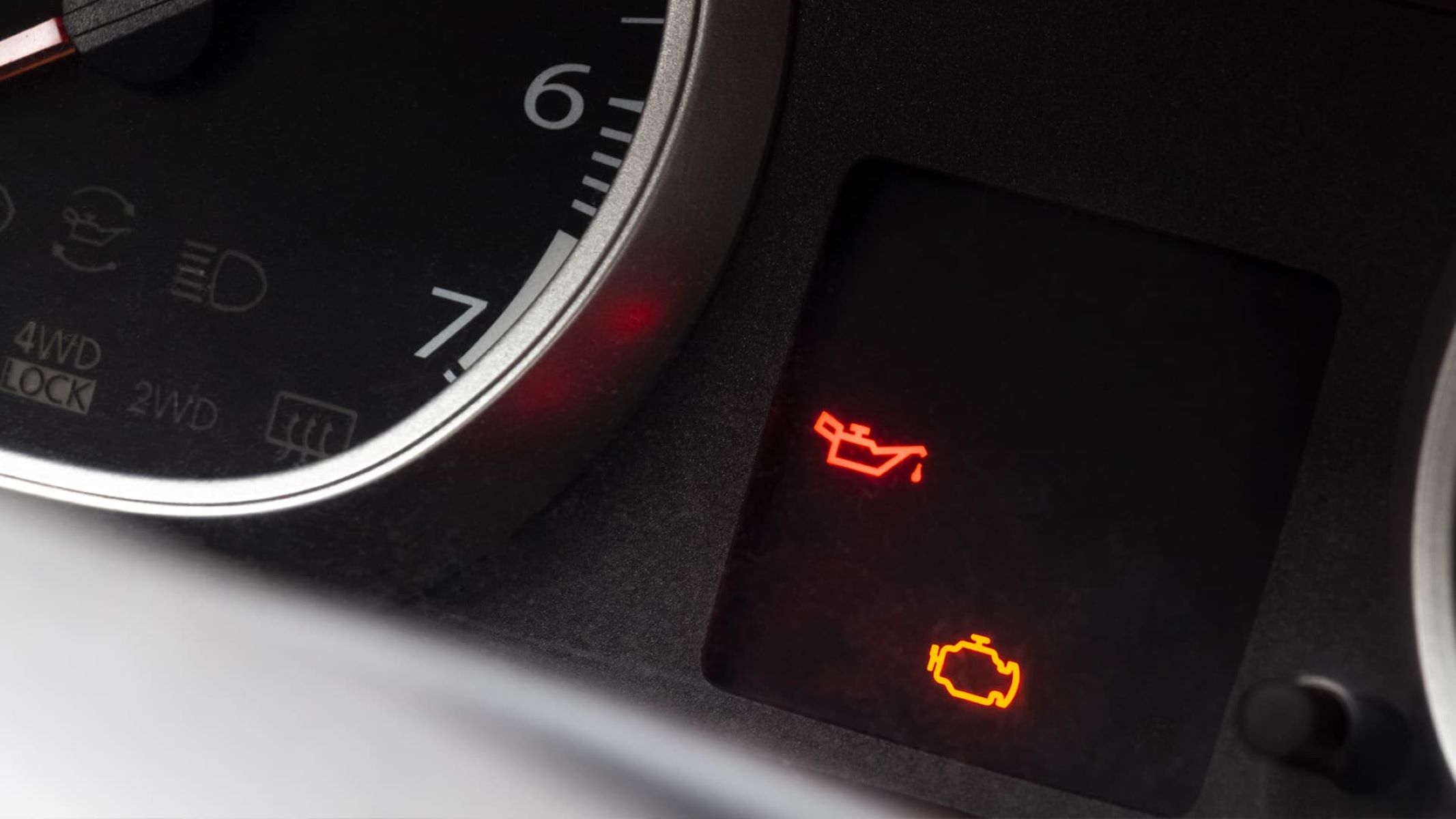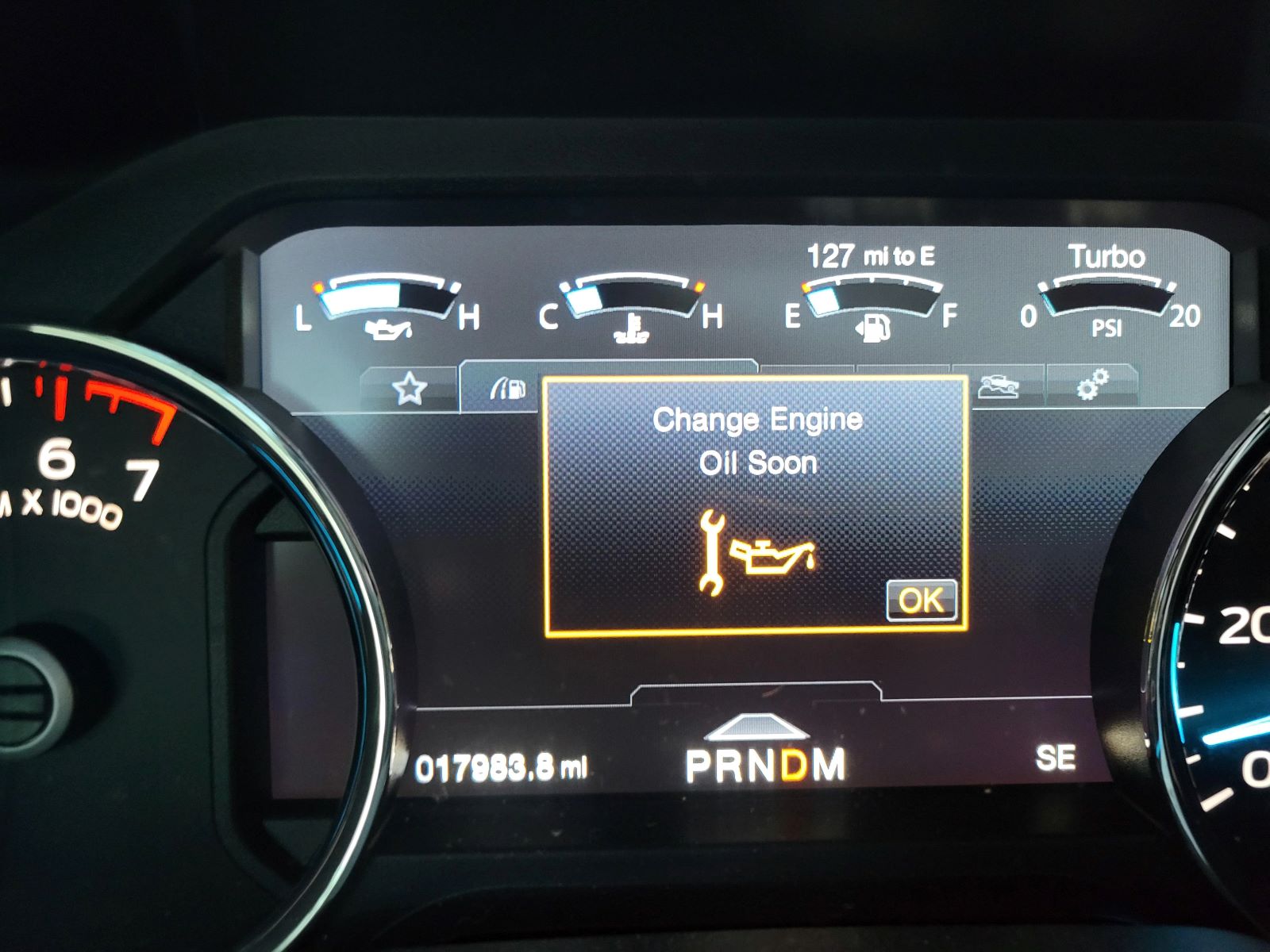Home>Automotive>Understanding The Oil Pressure Low Stop Engine Light Behavior And Possible Causes


Automotive
Understanding The Oil Pressure Low Stop Engine Light Behavior And Possible Causes
Published: February 19, 2024
Learn about the causes and implications of the oil pressure low stop engine light in automotive vehicles. Understand how to address this critical issue.
(Many of the links in this article redirect to a specific reviewed product. Your purchase of these products through affiliate links helps to generate commission for Regretless.com, at no extra cost. Learn more)
Table of Contents
Introduction
The oil pressure low stop engine light is a crucial indicator that demands immediate attention from drivers. When this warning light illuminates on the dashboard, it serves as a vital signal that the vehicle's engine is experiencing a potentially serious issue related to oil pressure. Understanding the significance of this warning light and the potential causes behind its activation is essential for maintaining the health and longevity of the vehicle's engine.
The purpose of this article is to delve into the behavior of the oil pressure low stop engine light, shedding light on its significance and the potential reasons for its activation. By gaining a comprehensive understanding of this warning indicator, drivers can take proactive measures to address any underlying issues, thereby safeguarding the engine's well-being and ensuring a smooth driving experience.
In the following sections, we will explore the behavior of the oil pressure low stop engine light, deciphering its implications and the potential causes that can trigger its activation. By unraveling the mysteries behind this critical warning signal, drivers can equip themselves with the knowledge needed to respond effectively when faced with this alarming dashboard notification.
What is the oil pressure low stop engine light?
The oil pressure low stop engine light, often depicted as an oil can symbol or the words "oil" or "stop," is a vital dashboard warning indicator found in modern vehicles. When this light illuminates, it serves as a critical signal that the engine's oil pressure has dropped to a potentially dangerous level. This warning is designed to alert drivers to a pressing issue that requires immediate attention to prevent potential engine damage or failure.
The oil pressure low stop engine light is a crucial component of a vehicle's onboard diagnostics system, which continuously monitors various engine parameters to ensure optimal performance and safety. Specifically, this warning light is triggered when the engine's oil pressure falls below the recommended threshold, indicating a potential lack of lubrication and protection for vital engine components.
Upon activation, the oil pressure low stop engine light typically appears in red or amber, signaling the urgency of the situation. In some vehicles, the light may flash or remain steadily lit, depending on the severity of the oil pressure drop. Regardless of the specific visual representation, the appearance of this warning light demands immediate action from the driver to prevent potential engine damage.
When the oil pressure low stop engine light illuminates, it is essential for drivers to respond promptly by pulling over to a safe location and shutting off the engine. Continuing to operate the vehicle with low oil pressure can lead to increased friction and heat within the engine, potentially causing irreversible damage. Therefore, it is crucial to heed the warning and address the underlying issue before resuming driving.
In summary, the oil pressure low stop engine light serves as a vital safeguard for the engine's well-being, alerting drivers to potential oil pressure irregularities that require immediate attention. Understanding the significance of this warning light and responding promptly to its activation can help prevent costly engine repairs and ensure the continued reliability of the vehicle.
Understanding the behavior of the light
The behavior of the oil pressure low stop engine light is a critical aspect that drivers must comprehend to effectively respond to its activation. When this warning light illuminates on the dashboard, it signifies a potential drop in the engine's oil pressure, which can have serious implications for the vehicle's performance and longevity.
Upon activation, the oil pressure low stop engine light conveys a sense of urgency, typically appearing in red or amber to grab the driver's immediate attention. The color red, often associated with danger, serves as a clear indication that the situation demands prompt action. In some vehicles, the light may flash to emphasize the pressing nature of the issue, while in others, it may remain steadily lit to signal a sustained oil pressure irregularity.
The behavior of the light is designed to prompt a specific response from the driver. When the oil pressure low stop engine light activates, it serves as a direct signal for the driver to pull over to a safe location and shut off the engine. This immediate action is crucial to prevent potential engine damage resulting from inadequate lubrication and increased friction caused by low oil pressure.
Understanding the behavior of the oil pressure low stop engine light also involves recognizing the potential variations in its activation. In some instances, the light may illuminate during sudden acceleration or deceleration, indicating a temporary drop in oil pressure due to rapid changes in engine load. However, if the light remains lit or flashes consistently, it suggests a sustained oil pressure issue that requires thorough inspection and resolution.
Furthermore, drivers should be aware of the potential triggers for the light's activation, such as low oil levels, a malfunctioning oil pump, or a clogged oil filter. By understanding these potential causes, drivers can better assess the urgency of the situation and take appropriate measures to address the underlying issue.
In essence, understanding the behavior of the oil pressure low stop engine light empowers drivers to respond effectively when faced with this critical warning indicator. By promptly acknowledging the light's activation and taking immediate action to address potential oil pressure irregularities, drivers can safeguard the engine's well-being and mitigate the risk of costly repairs.
The behavior of the oil pressure low stop engine light serves as a vital communication tool, conveying the urgency of the situation and prompting drivers to prioritize the health of their vehicle's engine. By comprehending the significance of this warning indicator and responding proactively, drivers can uphold the reliability and longevity of their vehicles, ensuring a safe and smooth driving experience.
Possible causes of the light coming on
The activation of the oil pressure low stop engine light can stem from various underlying causes, each of which poses potential risks to the engine's well-being. Understanding these possible triggers is essential for drivers to effectively address the issue and prevent further damage. Here are the key factors that can lead to the illumination of this critical warning indicator:
-
Low Engine Oil Level: Insufficient engine oil can lead to a drop in oil pressure, triggering the activation of the oil pressure low stop engine light. This may result from oil leaks, inadequate maintenance, or prolonged usage without oil replenishment.
-
Oil Pump Malfunction: The oil pump is responsible for circulating oil throughout the engine to maintain proper lubrication. If the oil pump malfunctions or fails, it can disrupt the oil pressure, prompting the warning light to illuminate.
-
Clogged Oil Filter: A clogged or obstructed oil filter can impede the flow of oil, leading to decreased oil pressure within the engine. Over time, contaminants and debris can accumulate in the oil filter, hindering its effectiveness and potentially causing the warning light to activate.
-
Worn or Diluted Engine Oil: Engine oil that has deteriorated due to prolonged use or contamination can lose its viscosity and lubricating properties. As a result, the engine may experience reduced oil pressure, prompting the activation of the warning light.
-
Faulty Oil Pressure Sensor: The oil pressure sensor, responsible for monitoring oil pressure levels, can become faulty or malfunction, leading to inaccurate readings and the erroneous activation of the oil pressure low stop engine light.
-
Engine Wear and Tear: Over time, internal engine components can experience wear and tear, leading to increased clearance and potential oil leakage. This can result in reduced oil pressure, triggering the warning light.
-
Sudden Oil Pressure Fluctuations: Rapid changes in engine load, such as sudden acceleration or deceleration, can cause temporary drops in oil pressure, leading to the activation of the warning light. While this may not necessarily indicate a severe issue, sustained fluctuations warrant attention.
-
Oil Viscosity Issues: Using the incorrect viscosity grade of engine oil or mixing different oil types can impact oil flow and pressure, potentially leading to the activation of the warning light.
By recognizing these potential causes, drivers can take proactive measures to address the underlying issues and restore proper oil pressure within the engine. Regular maintenance, including monitoring oil levels, inspecting the oil pump and filter, and using the recommended engine oil, can help mitigate the risk of the oil pressure low stop engine light activation. Additionally, promptly addressing any warning light activation through professional inspection and maintenance can safeguard the engine's longevity and performance.
Conclusion
In conclusion, the oil pressure low stop engine light serves as a critical safeguard for the engine's well-being, signaling potential oil pressure irregularities that demand immediate attention. Understanding the behavior of this warning indicator is paramount for drivers, as it empowers them to respond effectively and prevent potential engine damage. By promptly acknowledging the activation of the oil pressure low stop engine light and taking immediate action to address potential oil pressure irregularities, drivers can safeguard the engine's longevity and mitigate the risk of costly repairs.
The possible causes of the oil pressure low stop engine light coming on, ranging from low engine oil level to oil pump malfunctions and clogged oil filters, highlight the diverse factors that can impact oil pressure within the engine. By recognizing these potential triggers, drivers can proactively address underlying issues and restore proper oil pressure, thereby ensuring the continued reliability and performance of their vehicles.
Ultimately, the oil pressure low stop engine light serves as a vital communication tool, conveying the urgency of the situation and prompting drivers to prioritize the health of their vehicle's engine. By comprehending the significance of this warning indicator and responding proactively, drivers can uphold the reliability and longevity of their vehicles, ensuring a safe and smooth driving experience.
In essence, the oil pressure low stop engine light is not to be overlooked or ignored. It demands immediate attention and a proactive response from drivers to prevent potential engine damage. By staying vigilant and addressing any warning light activation through professional inspection and maintenance, drivers can uphold the health and performance of their vehicles, ensuring a safe and enjoyable driving experience for years to come.




